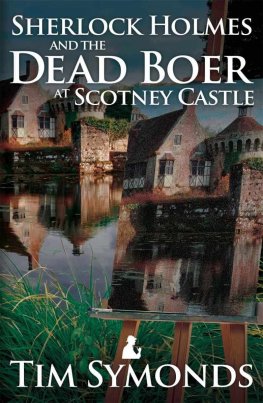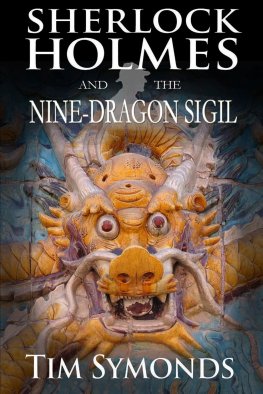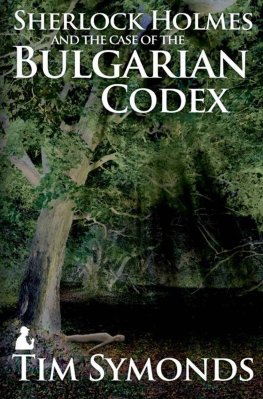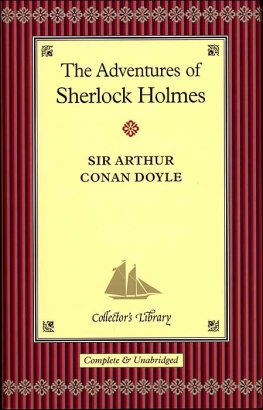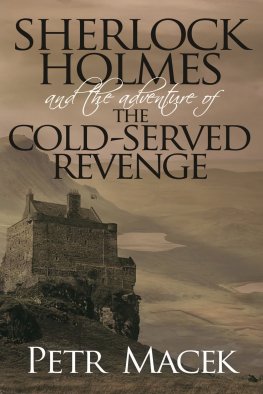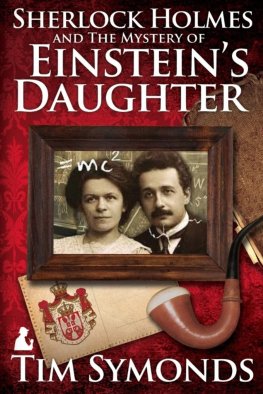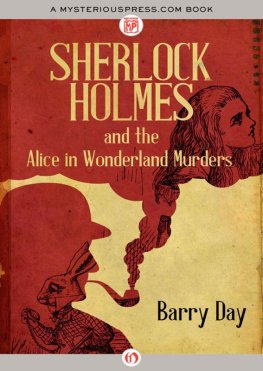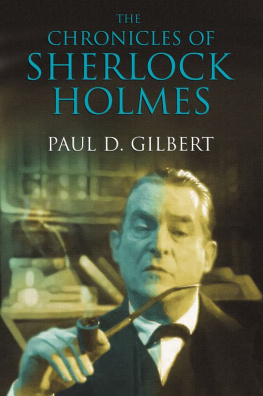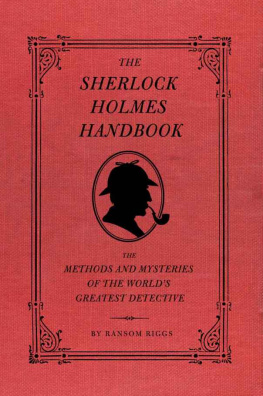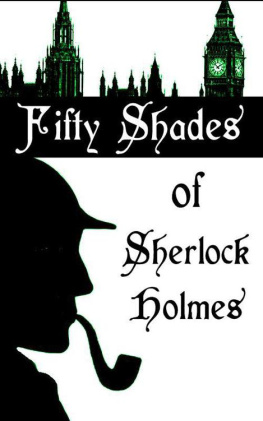Sherlock Holmes and The Dead Boer At Scotney Castle
By
Tim Symonds
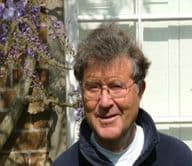
Photo Lesley Abdela
Tim Symonds was born in London and grew up in Somerset, Dorset and Guernsey. After several years in East and Central Africa in his late teens farming and driving bulldozers he moved to California and graduated from UCLA with a degree in Politics. He is a fellow of the Royal Geographical Society and former member of the Chartered Institute of Journalists.
He and his partner Lesley live in the High Weald of Sussex where the events recounted in the Dead Boer took place.
Sherlock Holmes and the Dead Boer at Scotney Castle is Dr John H. Watsons account of the extraordinary happenings which took place in Sussex and Kent on a spacious early Edwardian summer day. Never before had Holmes and Watson come up against a brotherhood like the Kipling League. Dedicated to their Patron Rudyard Kipling, the Poet of Empire, the Leagues sole allegiance was to Englands civilising mission. Its members would allow nothing to get in their way. It is the only chronicle Sherlock Holmes prevented his faithful amanuensis from publishing on the instant. His refusal to allow the Dead Boer to see the light of day is understandable. Never had he suffered such humiliation as the Kipling League inflicted upon him, the coterie Holmes referred to (when he could bring himself to refer to them ever again) as the Sungazer Gang.
Despite Holmes opposition, Watson submitted the manuscript to the Editor of The Strand for reasons he explains. It was returned without comment. Was it because Holmes accuses such rich and powerful men of murder - four leading members of the Kipling League? Or had Holmes frightened off every outlet Watson was likely to approach?
Watsons persistent attempts to bring this adventure to his public shook his friendship with Holmes to its core. Even before the Dead Boer was completed, Watson came across a desk-diary with Notes on the Watson Problem scrawled on the cover in his fellow-lodgers precise hand, tucked away with a box of Dutch East Indian cigars in the coal-scuttle. The diary contained just two comments, the first a quote from The Case of The Six Napoleons - Watson, while limited, is exceedingly pertinacious - and more ominously and with no apparent sense of irony, Watsons reports are most incriminating documents. Despite my opposition he continues to compile his narratives to afflict his long-suffering public.
Within minutes of this discovery Watson hurried to the tin storage-box safeguarding his notes. He emptied the contents into a Russian-leather Gladstone bag stamped on the side with John H. Watson, M.D., Late Indian Army in elegant gold lettering. He took the valise to the vaults of Coxs Bank in Craigs Court. A century and more later the Gladstone reappeared in a makeshift hut in the Weald of Sussex, wrapped in a piece of brown paper and tied round with tarred twine. It contained an archive of many treasures, the paralipomena of Watsons writings - envelopes bearing stamps with the head of Victoria, others that of Edward V11, a copy in Watsons hand of a letter in his name in the Edinburgh Evening Dispatch dated September 24 1900, a parchment carrying the signature of a British Ambassadors wife in Peking commencing Yuan Shih Kai is the Chinaman of the future, a leather-bound tome embossed with the Karolinska Institutes emblem in gold, a text on the aperient property of Tamarix gallica, and two small Moroccan red-leather boxes illuminated with fiery dragons, filled with a mix of powdered jade, cinnabar and hematite, inscribed Elixir of Life in Chinese pictogrammes on the lids.
The Gladstone also contained an Addendum compiled in 1912 in Watsons scribbled hand, headed further notes referring to the Scotney Castle matter, now in its rightful place below. In an engaging marginal note Watson writes, no collection of my trifling achievements would be complete without an account of this very singular business. He adds, I hope my readers enjoy taking the journey with me as much as its end.
As do I.
Tim Symonds FRGS
Park Farm Oast
Burwash
East Sussex
March 2012
By Dr. John Watson
A most unusual circumstance has obliged me to write this preface, namely my great friend Sherlock Holmes refusal to permit the publication of the affair I have titled Sherlock Holmes and the Dead Boer at Scotney Castle. Holmes eyes narrowed when he told me our friendship would be gravely imperilled if I placed these events before my readers. He even ordered me to destroy such notes as I had managed to scribble during that extraordinary day. I refused to agree to any such undertaking.
The Dead Boer is in my estimation the most unforgettable adventure of our many years together, an extraordinary encounter with the rich and powerful Kipling League in Kent and Sussex in the early summer of 1904. If we accept Holmes own description of these events, no other case or crime was more swiftly but intricately devised, of greater complexity in timing and conduct, or carried through with such ingenuity and aplomb.
From the moment I refused to obey his command, Holmes became much less communicative. Weeks passed without a direct word from him. He began to spend more and more time at the isolated farmhouse purchased two years before near Kings Standing, in the county of Sussex, busying himself constructing dew ponds and purchasing Italian bees.
For some months I attempted to keep our friendship alive. I continued to visit him on the farm where in secret I constructed a scriptorium by a cheerful brook (or gill in the local dialect) near to a hatch of Old World Swallowtail butterflies, as far away as possible from the hives of Apis mellifera ligustica assembled in his meadows. These hives with their odd, sloping edifices had the appearance of long-departed Roman tortoises or the Square formation of the Brigade of Foot Guards in battle.
I call it a scriptorium because that was its purpose. In reality it hardly deserved to be called a hen-cree. Here I began to turn my notes for the Dead Boer into a manifesto if only for posterity. To explain my half-day absences, I carried a gun wherever I strolled, informing Holmes I was shooting for the pot, though the Sussex rabbit seemed tame after the wild goat of the Khyber Pass.
The Dead Boer is more of a chronique intime than many of the earlier stories. I most often call it The Perplexing Matter rather than Case because no formal enquiry was ever conducted after Holmes and I fled in disarray from the dbcle. If I appear inordinately proud of the scientific research which informed the Watson Codex I beg indulgence for a former army doctors vanity.
To sustain me while ensconced in my hutch, Mrs. Keppell, the same tidy widow who brought Holmes his food, dressed me something filling (and, in winter, warming) - great hunches of bread and cheese and a bottle of cordial confection. She was a daughter of rich soil, a mulier fortis, of ample white hair and a grandly-modelled face, much given to explosions of laughter. With the passage of the seasons (and my shooting) the menu grew more extensive. Venison. Partridge. Over-ripe pheasant. Jugged Hare. For an occasional special treat, Rother Rabbit with broccoli was followed by Lady Pettus biscakes.
When winter set in, I decided against a grate, terrified that fire would reduce my notes and documents to ash. I made cups of coffee at a spirit-lamp and endured many long cold afternoons, feet inside a pair of cardboard boxes. When completed, I placed the work in my portfolio which I returned to its hiding-place at 221b Baker Street under our landladys care, alongside the Beaumont-Adams revolver.

